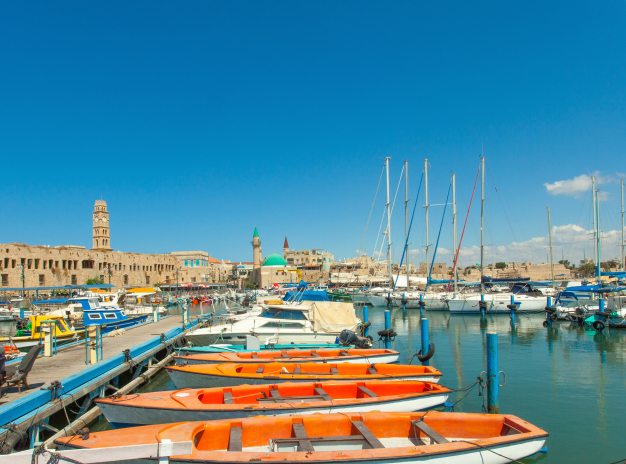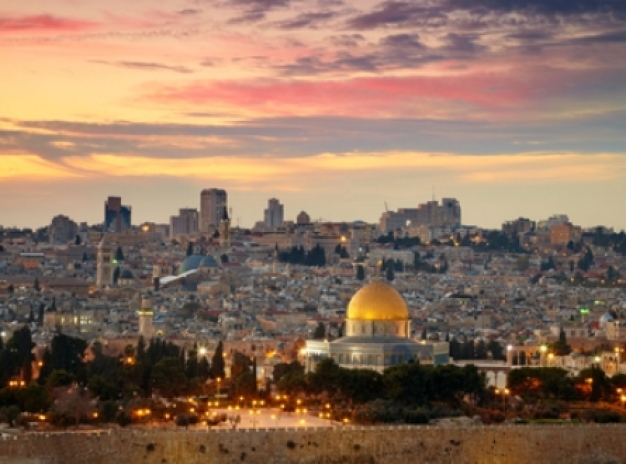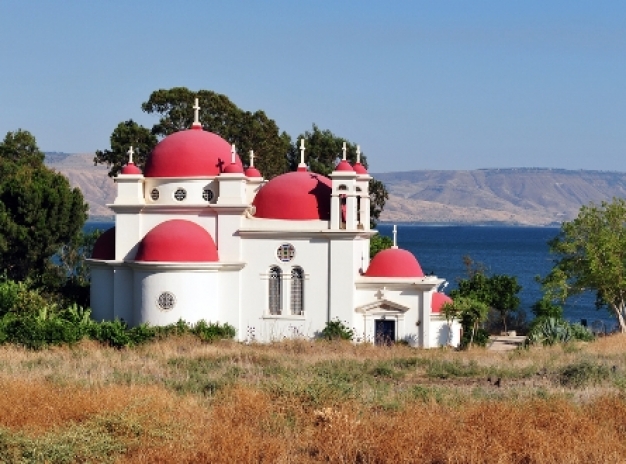
Jericho
8 Top-Rated Tourist Attractions in Jericho
Jericho. The city of ups and downs, glory and shame, death and rebirth. Oasis in the middle of the desert. The most ancient city on the planet Earth.
In Hebrew, the city is called Yeriho, in Arabic Ericha, it stands at the foot of the Judean Mountains opposite the confluence of the Jordan in the Dead Sea in the Jericho oasis. Jericho is the most ancient of the excavated cities in the world, it has about 10 thousand years of almost continuous settlement. In addition, it is the lowest city in the world, which is more than 350 meters below sea level in an oasis that is considered the largest in the entire Middle East and is located a few kilometers north of the northern tip of the Dead Sea.
1. Jericho Tell
Perhaps the main attraction of Jericho is the hill of the ancient city, Tell Yeriho, here are the oldest urban ruins in the world. It existed even before the invention of pottery.
The Arabs call it Tell es-Sultan, and the fount next to it is En-Sultan, the one where the prophet Elisha desalinated water.
It was in this place that the walls fell from the sound of Israel’s pipes. The excavations carried out here many times, from the time of the English researchers of the last century, found a lot of interesting things.
First Warren, and after Kathleen Canyon, unearthed the entire Tell es Sultan, revealing the ruins of the city right down to the Neolithic tower - 8th century BC, the time there wasn’t any city nowhere in the world.
Found also built of red brick city walls, which date goes back to about 3rd century BC - the beginning of early bronze, when again there were practically no cities in the world.
Location: Jericho
2. Hisham's Palace
Hisham's Palace is located in the north-eastern part of Jericho. It was built in the VIII century AD. This great for those times architectural structure was destroyed during a strong earthquake soon after the completion of construction.
Currently, here you can see numerous fragments of ancient mosaics, the ruins of the colonnade, mosques, baths. Even judging only by these remains, one can imagine how majestic and lush was the Palace of Hisham, which was a vivid example of Umayyad architecture.
The enormous cultural value has the mosaic that is perfectly preserved in the room adjacent to the bath. It was called the "Tree of Life": in the shadow of the branches of a branchy tree on one side it depicts a lion devouring a deer, and on the other quietly grazing chamois. Mosaic is appropriated by the symbolic significance of the intransigence of Islam to the enemies and tranquility and friendship within the Muslim world.
Location: 2 kilometers north of Elisha's Spring, Jericho
3. Mount of Temptation
In the vicinity of Jericho (in the south-east of the city) there is a mountain, which the ancient Christian tradition connects with the place where Christ went after His baptism, where he fasted for 40 days and was tempted by the devil. This mountain is located opposite the place where St. John the Baptist preached and baptized people on the banks of the Jordan.
Since ancient times, monks settled in these places. There are many caves in which hermits labored. The first monastery was built on the Forty-Day Mount in 340. After the Persian devastation, it ceased to exist and was restored only at the end of the XIX century.
Those wishing to get to the monastery are awaited by the difficult ascent, which is customarily done with the Jesus prayer. Having risen to the monastery, we first see a small cave temple and one of the ancient caves in which the devotees lived. Then we pass to the temple, consecrated in honor of the Annunciation of the Blessed Virgin. In the temple itself there is a staircase leading up to a small chapel, in which, under the altar, there is a stone on which, according to legend, the Lord prayed during His forty-day fast. In the 19th century, 20 new cells were built at the monastery, but they were never inhabited. If in the old days many monastics worked here, now almost no one here can live. One or two or three people, then they change.
Location: 4 kilometers northwest of Jericho center.
4. Wadi Qelt
The long and deep gorge of Wadi Qelt crosses the northern part of the Judean desert on the way of hermits east of Jerusalem to the Dead Sea. For centuries, this area has been a refuge for the rebels and the persecuted, a haven for nomads and hermits. The gorge originates near the north-eastern outskirts of Jerusalem on the slopes of Mount Beit-El, and ends near the city of Jericho. The length of the gorge is 28 km, and the height difference is more than 1000 meters. Three springs of Ein Prat, Ein Mabua and Ein Kelt hit the bottom of the gorge. Around the springs appeared beautiful oases with a rich flora. The desert landscape creates rocky and steep cliffs. On the slopes of the sandy steep cliffs of the Wadi Qelt gorge there is one of the oldest, most beautiful and unusual monasteries of the Judean desert and the whole world - the monastery of St. George, which was built in the rock over a cliff in an inaccessible place. If you follow further along the gorge, you can reach the ruins of the winter Hasmonean palaces - one of the most magnificent creations of the great King Herod.
5. St. George's Monastery
The monastery of St. George is located on the West Bank, not far from the Dead Sea. This Orthodox monastery is considered one of the oldest in the world. It is located on the territory of the Wadi Qelt gorge, among the expanses of the Judean desert. The amazing complex of the 5th-6th century with its existing chapels and cells was erected on a cliff. Today, monks of Greek Orthodoxy live in the monastery. You can reach it using the pedestrian bridge across the valley.
The monastery is completely built of stone and is incredibly beautiful, it has an ancient chapel and many religious artifacts. The history of the construction of the monastery is very interesting, according to one of the legends, it was built next to a secluded cave where the prophet Elijah was hidden for three years and six months. The monastery was built by five Syrian monks who managed to find the legendary cave.
The skulls of monks-martyrs who lived in the monastery at the beginning of the 17th century and were killed by Persian conquerors are considered an important relic. A lot of interesting historical artifacts are kept in the walls of the monastery, so it will be interesting to visit for absolutely everyone.
Location: Jericho Road (20 kilometers from Jerusalem)
6. Qasr El Yahud
The supposed place of the baptism of Jesus Christ was in the area of Bethabara, in the lower reaches of the Jordan, about 10 kilometers from its confluence with the Dead Sea. Today this place is known as Qasr El Yahud (translated from Arabic as “Jewish Palace”). It is located in the border military zone between Israel and Jordan, and for a long time was closed to the public - access was possible only to pilgrims once a year on the holiday of Epiphany.
Qasr El Yahud is a strictly guarded border area, surrounded by barbed wire - before getting to the Jordan River, tourists drive through a checkpoint with a search. The territory bordering the Jordan beyond the fence has been mined in many places - since the Six Days War of 1967 (as a result the West Bank from Jordan came under the control of Israel). Around there is a desert, in the green valley below the Jordan river flows, and distant mountains are the territory of Jordan.
In 2011 this historic place of baptism was opened to the public.
7. Inn of the Good Samaritan
On the way from Jerusalem to Jericho and the Dead Sea, you will definitely drive through one historical place connected with the Bible. This is the place where the hotel was supposedly located, in which the Good Samaritan placed the wounded man whom he found on the road between Jerusalem and Jericho.
Numerous artifacts from the Hellenic and Roman to the Ottoman periods were discovered here. The neighboring fortress of the Romans and the Crusaders (its ruins are visible opposite) once defended the road.
Now this place is a museum of mosaics and is called "Inn of the Good Samaritan". Stepping onto the ground where the museum is now located and breathing in some air, you immediately begin to realize the importance of this parable which Jesus told.
8. Hasmonean Palace
The complex of the Hasmonean Palace was built at the exit from the Wadi Qelt gorge on a hill oriented towards the Jericho Valley. The central fortified building about 50 × 50 meters in plan was surrounded by a moat on three sides. During archaeological excavations, a hall decorated with decorative plaster and frescoes was discovered. The remaining walls have a height of about seven meters, so the palace was probably two-leveled.
Two small pools were apparently surrounded by a peristyle structure, the elements of which were decorated with fresco and mosaic. The drowning of Aristobulus III, as indicated by Flavius in "Jewish Antiquities" (Book 15, Chapter 53), may have occurred in one of these pools.
It is assumed that the Hasmonean palace complex was still at its place for the beginning of Herod's reign.
Location: 2.5 kilometers west of Jericho




